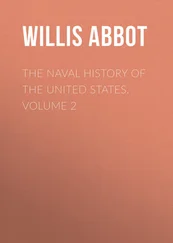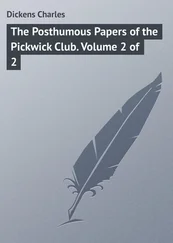Hubert Bancroft - The Native Races [of the Pacific states], Volume 1, Wild Tribes
Здесь есть возможность читать онлайн «Hubert Bancroft - The Native Races [of the Pacific states], Volume 1, Wild Tribes» — ознакомительный отрывок электронной книги совершенно бесплатно, а после прочтения отрывка купить полную версию. В некоторых случаях можно слушать аудио, скачать через торрент в формате fb2 и присутствует краткое содержание. ISBN: , Жанр: foreign_antique, foreign_prose, на английском языке. Описание произведения, (предисловие) а так же отзывы посетителей доступны на портале библиотеки ЛибКат.
- Название:The Native Races [of the Pacific states], Volume 1, Wild Tribes
- Автор:
- Жанр:
- Год:неизвестен
- ISBN:http://www.gutenberg.org/ebooks/41070
- Рейтинг книги:5 / 5. Голосов: 1
-
Избранное:Добавить в избранное
- Отзывы:
-
Ваша оценка:
- 100
- 1
- 2
- 3
- 4
- 5
The Native Races [of the Pacific states], Volume 1, Wild Tribes: краткое содержание, описание и аннотация
Предлагаем к чтению аннотацию, описание, краткое содержание или предисловие (зависит от того, что написал сам автор книги «The Native Races [of the Pacific states], Volume 1, Wild Tribes»). Если вы не нашли необходимую информацию о книге — напишите в комментариях, мы постараемся отыскать её.
The Native Races [of the Pacific states], Volume 1, Wild Tribes — читать онлайн ознакомительный отрывок
Ниже представлен текст книги, разбитый по страницам. Система сохранения места последней прочитанной страницы, позволяет с удобством читать онлайн бесплатно книгу «The Native Races [of the Pacific states], Volume 1, Wild Tribes», без необходимости каждый раз заново искать на чём Вы остановились. Поставьте закладку, и сможете в любой момент перейти на страницу, на которой закончили чтение.
Интервал:
Закладка:
321
'Less bedaubed with paint and less filthy' than the Nootkas. At Port Discovery 'they wore ornaments, though none were observed in their noses.' At Cape Flattery the nose ornament was straight, instead of crescent-shaped, as among the Nootkas. Vancouver supposed their garments to be composed of dog's hair mixed with the wool of some wild animal, which he did not see. Vancouver's Voy. , vol. i., pp. 218, 230, 266. At Port Discovery some had small brass bells hung in the rim of the ears, p. 318. Some of the Skagits were tattooed with lines on the arms and face, and fond of brass rings, pp. 511-12. The Classets 'wore small pieces of an iridescent mussel-shell, attached to the cartilage of their nose, which was in some, of the size of a ten cents piece, and triangular in shape. It is generally kept in motion by their breathing,' p. 517. Wilkes' Nar. , in U. S. Ex. Ex. , vol. iv., pp. 317-20, 334, 404, 444, 511-2, 517-8. The conical hats and stout bodies 'brought to mind representations of Siberian tribes.' Pickering's Races , in Idem. , vol. ix., p. 23. The Clallams 'wear no clothing in summer.' Faces daubed with red and white mud. Illustration of head-flattening. Kane's Wand. , pp. 180, 207, 210-11, 224. Seemann's Voy. Herald , vol. i., pp. 108-9; Rossi , Souvenirs , p. 299; Dunn's Oregon , pp. 232-3; San Francisco Bulletin , May 24, 1859 ; Ind. Aff. Rept. , 1854, p. 243; Id. , 1857, p. 329; Stevens , in Pac. R. R. Rept. , vol. i., p. 430. Above Gray Harbor they were dressed with red deer skins. Navarrete , in Sutil y Mexicana , Viage , p. xciv: Cornwallis' New El Dorado , p. 97; Winthrop's Canoe and Saddle , p. 32-3; Murphy and Harned , in Puget Sd. Direct. , pp. 64-71.
322
The Skagit tribe being exposed to attacks from the north, combine dwellings and fort, and build themselves 'enclosures, four hundred feet long, and capable of containing many families, which are constructed of pickets made of thick planks, about thirty feet high. The pickets are firmly fixed into the ground, the spaces between them being only sufficient to point a musket through… The interior of the enclosure is divided into lodges,' p. 511. At Port Discovery the lodges were 'no more than a few rudely-cut slabs, covered in part by coarse mats,' p. 319. Wilkes' Nar. , in U. S. Ex. Ex. , vol. iv., pp. 319-20, 511, 517. The Clallams also have a fort of pickets one hundred and fifty feet square, roofed over and divided into compartments for families. 'There were about two hundred of the tribe in the fort at the time of my arrival.' 'The lodges are built of cedar like the Chinook lodges, but much larger, some of them being sixty or seventy feet long.' Kane's Wand. , pp. 210, 219, 227-9. 'Their houses are of considerable size, often fifty to one hundred feet in length, and strongly built.' Rept. Ind. Aff. , 1854, pp. 242-3. 'The planks forming the roof run the whole length of the building, being guttered to carry off the water, and sloping slightly to one end.' Stevens , in Pac. R. R. Rept. , vol. i., pp. 429-30. Well built lodges of timber and plank on Whidbey Island. Thornton's Ogn. and Cal. , vol. i., p. 300. At New Dungeness, 'composed of nothing more than a few mats thrown over cross sticks;' and on Puget Sound 'constructed something after the fashion of a soldier's tent, by two cross sticks about five feet high, connected at each end by a ridge-pole from one to the other, over some of which was thrown a coarse kind of mat; over others a few loose branches of trees, shrubs or grass.' Vancouver's Voy. , vol. i., pp. 225, 262. The Queniults sometimes, but not always, whitewash the interior of their lodges with pipe-clay, and then paint figures of fishes and animals in red and black on the white surface. See description and cuts of exterior and interior of Indian lodge in Swan's N. W. Coast , pp. 266-7, 330, 338; Crane's Top. Mem. , p. 65; Cornwallis' New El Dorado , p. 98; Clark's Lights and Shadows , p. 225.
323
The Nootsaks, 'like all inland tribes, they subsist principally by the chase.' Coleman , in Harper's Mag. , vol. xxxix., pp. 795, 799, 815; Ind. Aff. Rept. , 1857, p. 328. Sturgeon abound weighing 400 to 600 pounds, and are taken by the Clallams by means of a spear with a handle seventy to eighty feet long, while lying on the bottom of the river in spawning time. Fish-hooks are made of cedar root with bone barbs. Their only vegetables are the camas, wappatoo, and fern roots. Kane's Wand. , pp. 213-14, 230-4, 289. At Puget Sound, 'men, women and children were busily engaged like swine, rooting up this beautiful verdant meadow in quest of a species of wild onion, and two other roots, which in appearance and taste greatly resembled the saranne.' Vancouver's Voy. , vol. i., pp. 225, 234, 262. In fishing for salmon at Port Discovery 'they have two nets, the drawing and casting net, made of a silky grass,' 'or of the fibres of the roots of trees, or of the inner bark of the white cedar.' Nicolay's Ogn. Ter. , p. 147. 'The line is made either of kelp or the fibre of the cypress, and to it is attached an inflated bladder.' Seemann's Voy. Herald , vol. i., p. 109. At Port Townsend, 'leurs provisions, consistaient en poisson séché au soleil ou boucané; … tout rempli de sable.' Rossi , Souvenirs , pp. 182-3, 299. The Clallams 'live by fishing and hunting around their homes, and never pursue the whale and seal as do the sea-coast tribes.' Scammon , in Overland Monthly , vol. vii., p. 278. The Uthlecan or candle-fish is used on Fuca Strait for food as well as candles. Domenech's Deserts , vol. ii., p. 241. Lamprey eels are dried for food and light by the Nisquallies and Chehalis. 'Cammass root, … stored in baskets. It is a kind of sweet squills, and about the size of a small onion. It is extremely abundant on the open prairies, and particularly on those which are overflowed by the small streams.' Cut of salmon fishery, p. 335. 'Hooks are made in an ingenious manner of the yew tree.' 'They are chiefly employed in trailing for fish.' Cut of hooks, pp. 444-5. The Classets make a cut in the nose when a whale is taken. Each seal-skin float has a different pattern painted on it, p. 517. Wilkes' Nar. , in U. S. Ex. Ex. , vol. iv., pp. 318-19, 335, 444-5, 517-18. The Chehalis live chiefly on salmon. Id. , vol. v., p. 140. According to Swan the Puget Sound Indians sometimes wander as far as Shoalwater Bay in Chinook territory, in the spring. The Queniult Indians are fond of large barnacles, not eaten by the Chinooks of Shoalwater Bay. Cut of a sea-otter hunt. The Indians never catch salmon with a baited hook, but always use the hook as a gaff . N. W. Coast , pp. 59, 87, 92, 163, 264, 271; Thornton's Ogn. and Cal. , vol. i., pp. 293-4, 301, 388-9; Ind. Aff. Rept. , 1854, p. 241; Dunn's Oregon , pp. 732-5; Stevens , in Pac. R. R. Rept. , vol. i., p. 429. 'They all depend upon fish, berries, and roots for a subsistence, and get their living with great ease.' Starling , in Schoolcraft's Arch. , vol. iv., pp. 600-2. The Makahs live 'by catching cod and halibut on the banks north and east of Cape Flattery.' Ind. Aff. Rept. , 1858, p. 231. 'When in a state of semi-starvation the beast shows very plainly in them (Stick Indians): they are generally foul feeders, but at such a time they eat anything, and are disgusting in the extreme.' Id. , 1858, p. 225; Id. , 1860, p. 195; Cornwallis' New El Dorado , p. 97; Lord's Nat. , vol. i., pp. 102-5; Hittell , in Hesperian , vol. iii., p. 408; Winthrop's Canoe and Saddle , pp. 33-7; Maurelle's Jour. , p. 28.
Читать дальшеИнтервал:
Закладка:
Похожие книги на «The Native Races [of the Pacific states], Volume 1, Wild Tribes»
Представляем Вашему вниманию похожие книги на «The Native Races [of the Pacific states], Volume 1, Wild Tribes» списком для выбора. Мы отобрали схожую по названию и смыслу литературу в надежде предоставить читателям больше вариантов отыскать новые, интересные, ещё непрочитанные произведения.
Обсуждение, отзывы о книге «The Native Races [of the Pacific states], Volume 1, Wild Tribes» и просто собственные мнения читателей. Оставьте ваши комментарии, напишите, что Вы думаете о произведении, его смысле или главных героях. Укажите что конкретно понравилось, а что нет, и почему Вы так считаете.
![Hubert Bancroft The Native Races [of the Pacific states], Volume 1, Wild Tribes обложка книги](/books/750126/hubert-bancroft-the-native-races-of-the-pacific-s-cover.webp)

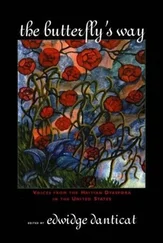

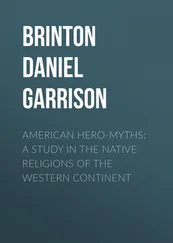

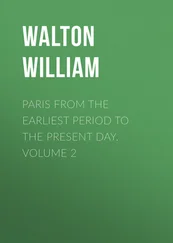

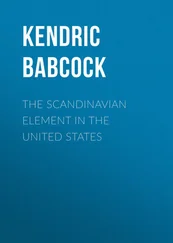
![Hubert Bancroft - The Native Races [of the Pacific states], Volume 5, Primitive History](/books/749157/hubert-bancroft-the-native-races-of-the-pacific-s-thumb.webp)
